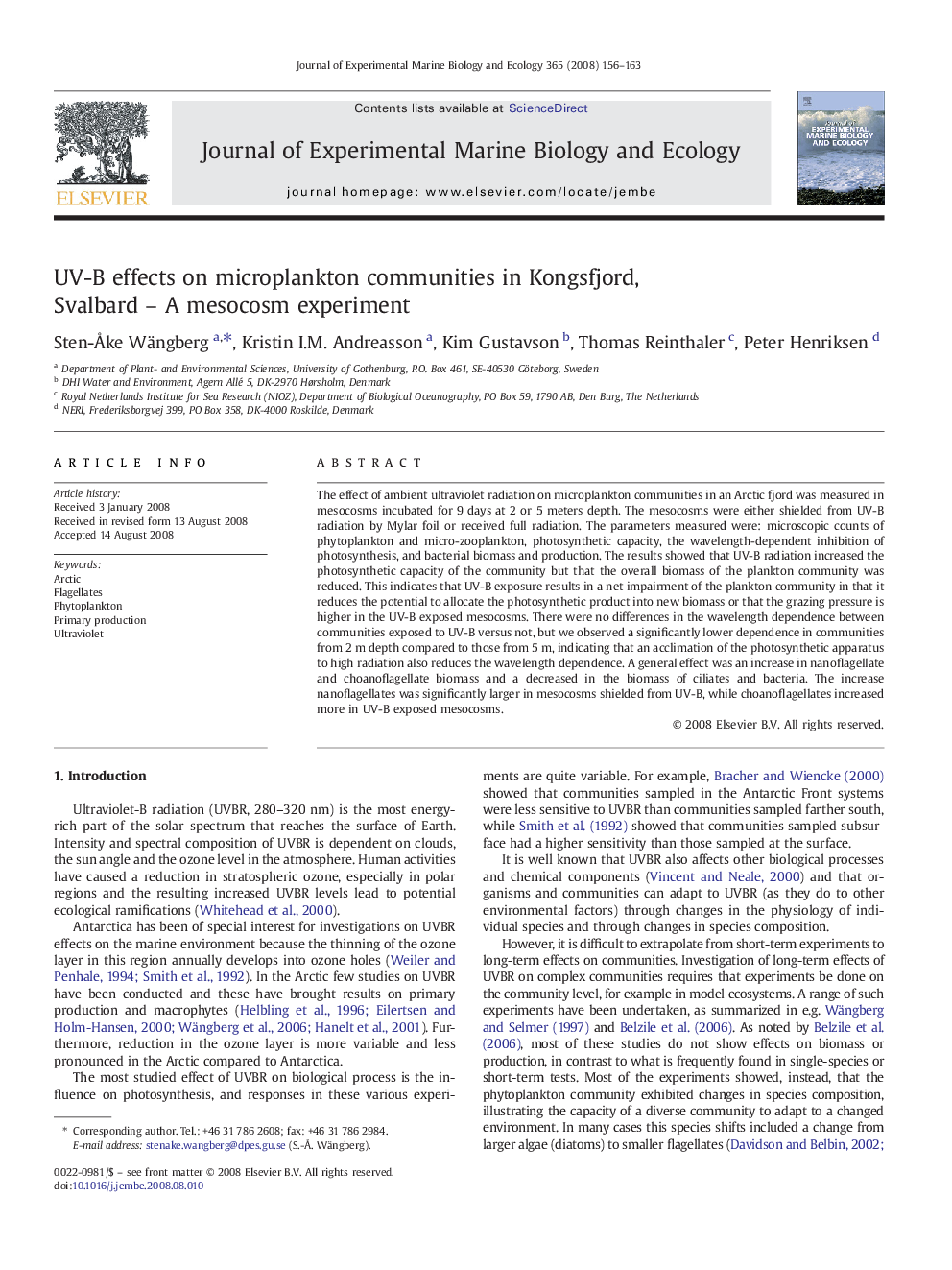| Article ID | Journal | Published Year | Pages | File Type |
|---|---|---|---|---|
| 4397221 | Journal of Experimental Marine Biology and Ecology | 2008 | 8 Pages |
Abstract
The effect of ambient ultraviolet radiation on microplankton communities in an Arctic fjord was measured in mesocosms incubated for 9Â days at 2 or 5Â meters depth. The mesocosms were either shielded from UV-B radiation by Mylar foil or received full radiation. The parameters measured were: microscopic counts of phytoplankton and micro-zooplankton, photosynthetic capacity, the wavelength-dependent inhibition of photosynthesis, and bacterial biomass and production. The results showed that UV-B radiation increased the photosynthetic capacity of the community but that the overall biomass of the plankton community was reduced. This indicates that UV-B exposure results in a net impairment of the plankton community in that it reduces the potential to allocate the photosynthetic product into new biomass or that the grazing pressure is higher in the UV-B exposed mesocosms. There were no differences in the wavelength dependence between communities exposed to UV-B versus not, but we observed a significantly lower dependence in communities from 2Â m depth compared to those from 5Â m, indicating that an acclimation of the photosynthetic apparatus to high radiation also reduces the wavelength dependence. A general effect was an increase in nanoflagellate and choanoflagellate biomass and a decreased in the biomass of ciliates and bacteria. The increase nanoflagellates was significantly larger in mesocosms shielded from UV-B, while choanoflagellates increased more in UV-B exposed mesocosms.
Related Topics
Life Sciences
Agricultural and Biological Sciences
Aquatic Science
Authors
Sten-Ã
ke Wängberg, Kristin I.M. Andreasson, Kim Gustavson, Thomas Reinthaler, Peter Henriksen,
